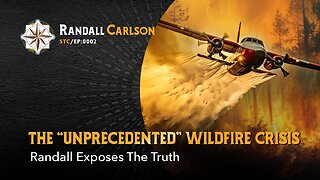Making Dry Ice from scratch
140323 Like and subscribe. This is an archive, check the link in the end if you are owner. In this video, I'm going to show how to make dry ice (frozen CO2) from scratch. I thought using dry ice to pre-cool my pulse tube cryocooler might help me get lower temperatures, since dry ice is -79C, and adding my pulse tube's ~100C temperature drop on top of that could get me very close to liquid nitrogen temperatures. But instead of just buying dry ice, I wanted to see if it was feasible to make it myself, so I went through the steps of producing, cooling/compressing, and discharging the CO2
as liquid to form ice.
There are several ways to produce CO2 - a few of these are:
-Reacting acid with baking soda
-Cooling and collecting exhaust from combustion of hydrocarbons
-Capturing exhaust from yeast as it consumes sugar
-Capturing human breath
-Dissolving atmospheric CO2 in water and extracting it under vacuum
-Reacting atmospheric CO2 with Calcium Hydroxide, creating Calcium Carbonate, then decomposing the Calcium Carbonate to release CO2 and Calcium Oxide. The Calcium Oxide is later regenerated back into Calcium Hydroxide with sodium hydroxide.
Once the CO2 is captured, it has to be stored. In theory, large gas bags could be used, but that's not very practical, so i used a fridge compressor to force the captured gas into a compressed air tank at ~160 PSI (about 12 bar). Using a 10 gallon (38L) tank, i stored approximately 1.8 lb (0.82kg) of CO2 gas.
However, to freeze CO2, it first has to be liquified by either high pressure, very low temperatues, or both. To liquify at room temperature around 25C requires about 60 bar of pressure (~867 psi), but my compressor was only capable of producing about 400 psi (about 28 bar). In order to liquify the CO2 at this pressure, i had to put the tank in an ice bath at 0C.
Even this wasn't quite enough, though, so to get a little bit of extra pressure, i fed the output from the 12 bar tank into the suction side of my compressor, allowing it to produce close to 600 PSI at the discharge side. In the ice bath, this was enough pressure to liquify the CO2, but it took a little over an hour to transfer and condense the CO2 from the 12 bar tank. I collected about 500 grams of liquid CO2 in the high pressure tank.
Once I had the liquid CO2, i turned my high pressure tank upside down so that the liquid would come out first, and discharged it. Liquid CO2 can't exist at 1 atmosphere of pressure, so as soon as it comes out of the tank, it flash freezes to dry ice at -79C.
The tricky part is capturing the frozen CO2, since most of it blasts out into the atmosphere. The container being used to capture the ice needs to be vented to work properly, but not vented too much, or else all the CO2 will be lost. To do this, I tried a sock (effectively a porous container), which probably collected less than 20% of the CO2 from the tank as ice, and came out in a fine powder, meaning it didn't last long. The second approach used a mold with velt holes, but i only recovered about ~2% of the CO2 this way.
I think the key to creating a block of dry ice is to discharge relatively slowly into a mold. I had my valve full open, and I think instead of allowing ice to collect and settle in the mold, the flow was blasting it out.
Ultimately, the time and cost of producing the dry ice from scratch make it impractical as a pre-cooler for liquid nitrogen generation.
Music Used:
Kevin MacLeod - Lobby Time
Kevin MacLeod - George Street Shuffle
Kevin MacLeod - Groove Groove
https://rumblevideoarchive.wordpress.com/
-
 47:51
47:51
Chrissy Clark
10 hours agoRed-Pilled Femininity w/ Caroline Downey
24.6K23 -
 58:47
58:47
Squaring The Circle w/ Randall Carlson
10 hours agoThe "Unprecedented" Wildfire Crisis - Squaring The Circle: A Randall Carlson Podcast
23.8K29 -
 2:22:14
2:22:14
Fresh and Fit
12 hours agoFresh&Fit Live Event w/ Special Guests
199K723 -
 1:07:38
1:07:38
Talk Nerdy 2 Us
8 hours agoDigital Defense Alert: Navigating the ArcaneDoor Intrusion & Special Guest, CEO of HowTube
27.9K4 -
 12:01
12:01
DepressedGinger
9 hours ago*REALISTIC* 2024 Election Scenario Revealed via Polling Update
37.8K32 -
 32:09
32:09
Alexis Wilkins
13 hours agoBetween the Headlines with Alexis Wilkins: TN Student Protest, UNION, Capital Gains, Climate Corps
45.7K22 -
 1:10:34
1:10:34
Kim Iversen
15 hours agoThe Border Crisis is Being Used to Push Digital ID | Whitney Webb
82.3K181 -
 1:01:12
1:01:12
The StoneZONE with Roger Stone
14 hours agoMore Phony Indictments! This Time in Arizona—GOP Strategist RC Maxwell Breaks it Down—The StoneZONE
57K13 -
 49:51
49:51
The Nima Yamini Show
12 hours agoHow He Went From ZERO to SUCCESS
52K8 -
 1:28:39
1:28:39
Robert Gouveia
13 hours agoBragg's Witnesses FLOUNDER under Cross-Examination in Trial Day 8
68.3K58